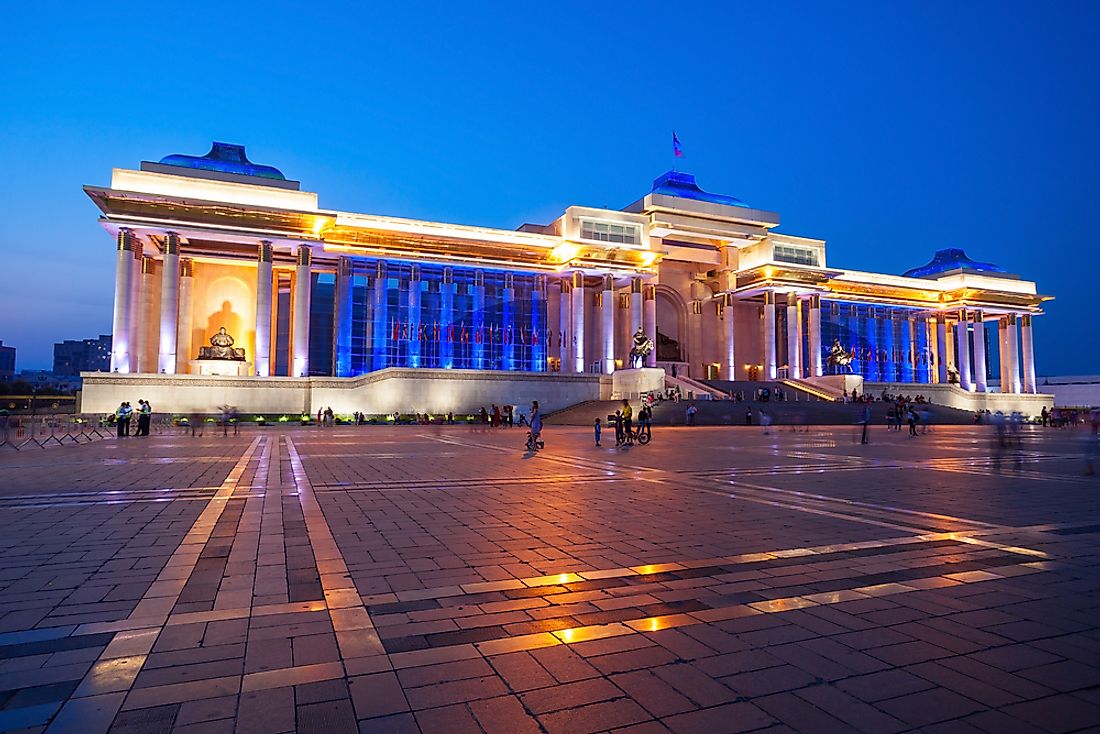What Type Of Government Does Mongolia Have?

Mongolia is a multi-party state and is a semi-presidential representative democratic republic with the executive power in the country being exercised by the President of the Republic and the Government. While the legislative power is vested in the parliament and government, the judiciary of Mongolia is independent of the legislative and the executive. Before the year 2008, the voting system of Mongolia was a "winner takes it all" type which discouraged strict party discipline. Following new electoral laws introduced in the country, the Mongolian People's Party claimed victory over the governing Democratic Party during the 2016 elections.
The Executive Branch Of The Government Of Mongolia
The Mongolian President is not only the Head of the National Security, and the Commander-in-Chief of the Armed Forces but also the Head of State. Candidates vying for the presidency are nominated only by parties that have seats in the Mongolian parliament. The president is elected to serve a term of four years by popular vote. One can serve only as president for two terms and is popularly elected by a national majority leader. According to the Constitution of Mongolia, the president is responsible for calling for the dissolution of government, issuing decrees; veto all parts of the legislation, proposing a prime minister and initiating legislation. If the president is incapacitated, absent, or resigns, the chairman of the State Great Khural (SGKh) stands in as president until a newly elected president is inaugurated.
The Government Of Mongolia
The leader of the Mongolian government is the prime minister who is appointed by the President to serve a term of four years. Members of the government are also appointed by the president but only after they are proposed by the prime minister. However, if the prime minister is not in consensus with the president on the issue concerning the appointment of members of government in a week's time, he or she is required to submit the issue to the SGKh for the appointment of the cabinet. The Mongolian Cabinet comprises of 13 ministries. The government of Mongolia can only be dismissed under the following conditions; when a motion of censure is voted in by the SGKh, when half of the cabinet simultaneously resigns, or when the Prime Minister resigns.
Parliament Of Mongolia
Mongolia has a unicameral parliamentary system comprising of 76 seats and is also known as the State Great Khural. Parliamentary seats are allocated through a system known as mixed-member proportional representation (MMP). The districts directly elect 48 of the 76 members while the remaining 28 are appointed through proportional representation by the political parties. Members of the State Great Khural elect the speaker and the vice speaker from either a coalition or each party in the government. Both the Vice Speaker and Speaker of Parliament also serve for a term of four years.
The Judicial Branch Of The Government Of Mongolia
All judges in Mongolia are selected by a Judicial General Council (JGC) which is empowered by the country's new constitution; the JGC also protects the rights of the judges. The highest judicial body in Mongolia's legal system is the Supreme Court. The JGC also appoints justices whom the president selects and are confirmed by the State Great Khural. Constitutionally, the Mongolian Supreme Court is empowered to go over all the decisions made by the other lower courts aside from rulings made in specialized courts unless such cases are appealed. The Supreme Court is also responsible for providing official interpretations on all laws apart from the constitution.











